Rent Best GPUs in GPU Cloud for Stable Diffusion: Top Picks 2024
Looking for the best GPU for stable diffusion? Check out our top recommendations for efficient and effective computing.
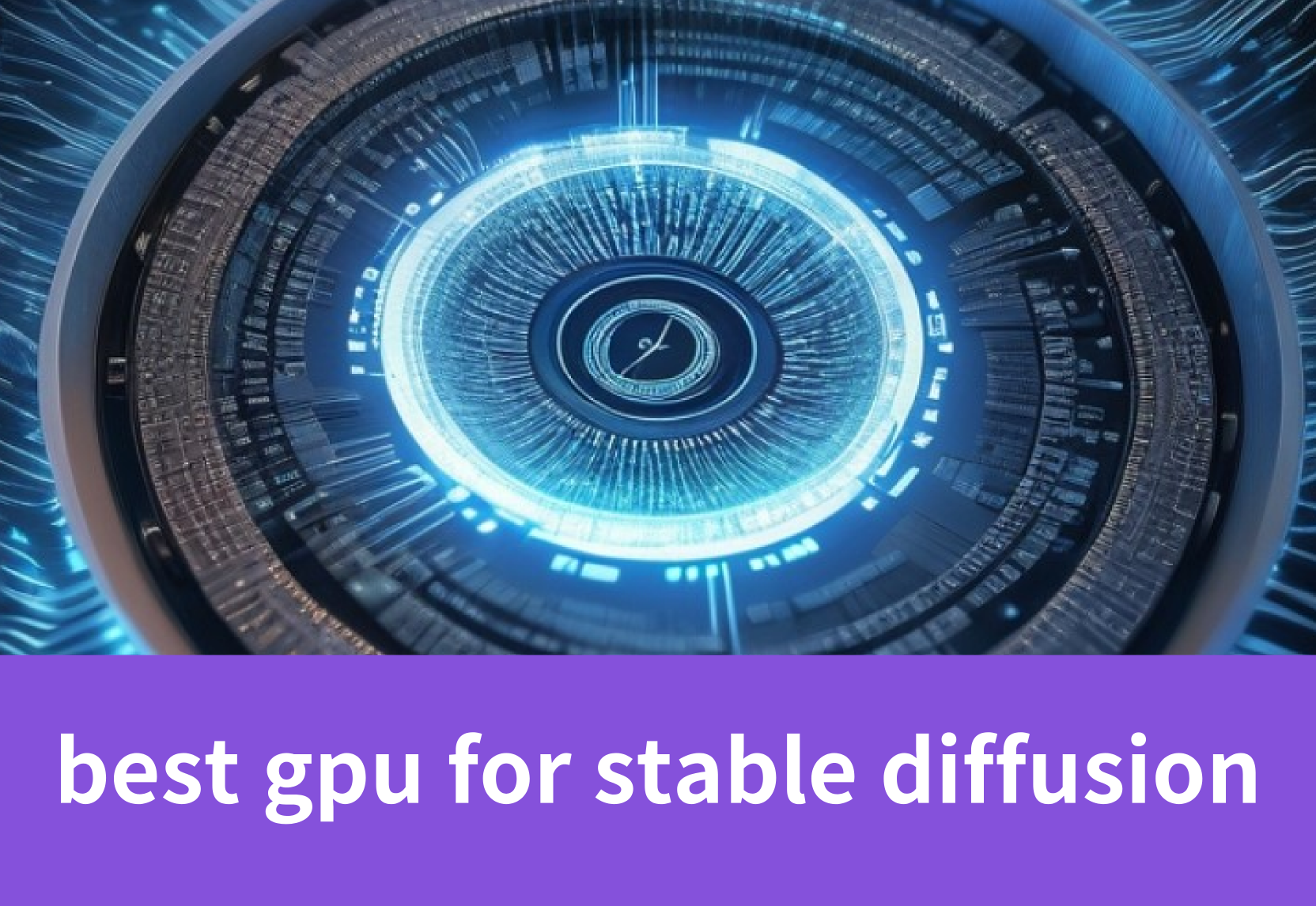
Introduction
When we dive into the world of stable diffusion and see how it affects performance, picking the right GPU is super important. NVIDIA RTX and AMD GPUs are famous for being really good at deep learning and creating images. It's essential to understand that things like tensor cores and how fast memory can move data around play a big part in making stable diffusion models work well. By 2024, choosing the best GPU for this job means looking at stuff like VRAM size, how well they perform in tests, and if they'll work with what you already have set up. Let's check out which ones are best suited for meeting the unique requirements of running stable diffusion tasks effectively.

What is Stable Diffusion?
Stable Diffusion is a machine-learning model. When we talk about GPU computing, it means the data gets handled smoothly and dependably for tricky simulations. Getting a grip on this idea is super important if you want to make sure your GPU does its job right when you need it for exact calculations.
Understanding Stable Diffusion and Its GPU Requirements
When we talk about GPUs like NVIDIA RTX and AMD ones, what they're made of plays a big role in how well stable diffusion works.
You should look at things such as how fast the memory can move data around, how much memory the GPU has, and special parts called tensor cores to get things running just right. To get top-notch results, pick a GPU that fits exactly what you need for working with stable diffusion models. Making sure your GPU matches up well with what stable diffusions require means you'll be able to create smooth images without any hiccups.
The Role of GPUs in Enhancing Stable Diffusion
Despite the capabilities of stable diffusion, its practical use mainly depends on the availability of powerful computing resources. Creating images through stable diffusion is computationally demanding, involving complex calculations and data processing tasks that can overload standard computer systems.
GPUs provide the necessary computational power and efficiency that enable stable diffusion models to operate at their full potential, delivering fast, high-quality image generation that can transform creative workflows and AI-driven processes.
Key GPU Specifications for Optimal Performance
When you're looking to get the best performance for stable diffusion, it's really important to pay attention to certain GPU features.
Memory bandwidth:
Memory bandwidth is a big deal because it helps speed up how fast data moves around when you're creating images, especially if those images are pretty detailed.
Tensor cores:
Then there's something called tensor cores found in NVIDIA GPUs; these are super helpful for deep learning tasks and can cut down on how long it takes to generate stuff significantly.
VRAM:
Don't forget about VRAM - stable diffusion models need a lot of it.
So choosing a GPU that has just the right mix of these specs based on what you need will make sure you see excellent results with your stable diffusion projects. Keep all this in mind as you hunt for the perfect GPU.
Top GPUs for Stable Diffusion in 2024
Choosing a GPU that has just the right mix of these specs based on what you need will make sure you see excellent results with your stable diffusion projects. Here are some of your choices:
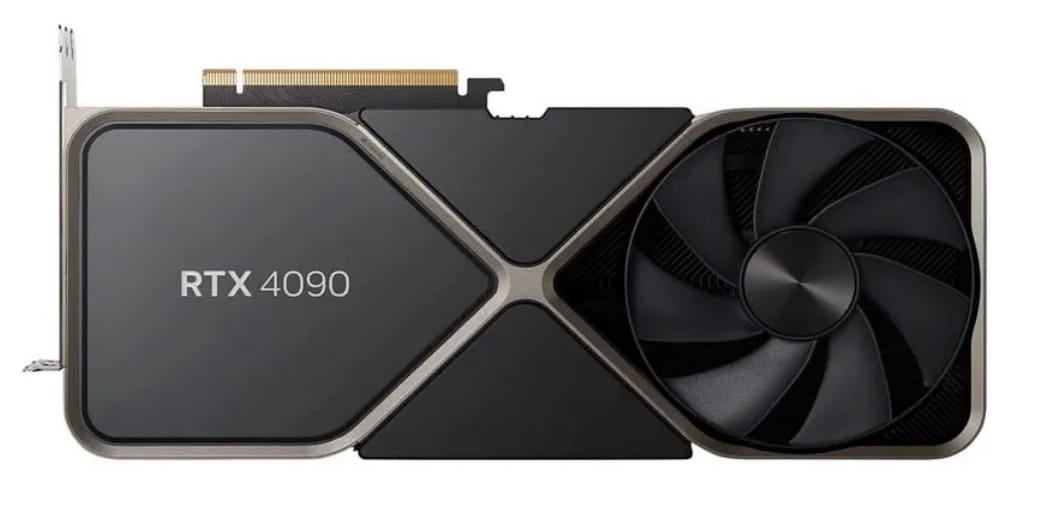
NVIDIA GeForce RTX 4090: Powerhouse for Professionals
Overview:
With 16,384 CUDA cores and 24GB GDDR6X VRAM, the RTX 4090 is not just a gaming powerhouse but also a professional-grade GPU. It’s designed for high-fidelity image generation and AI processes.
Pros:
- unmatched performance
- ample VRAM for high-definition tasks
- efficient thermal management
- cater to the unique requirements of professionals
Cons:
- high cost
- the need for a strong CPU and PSU
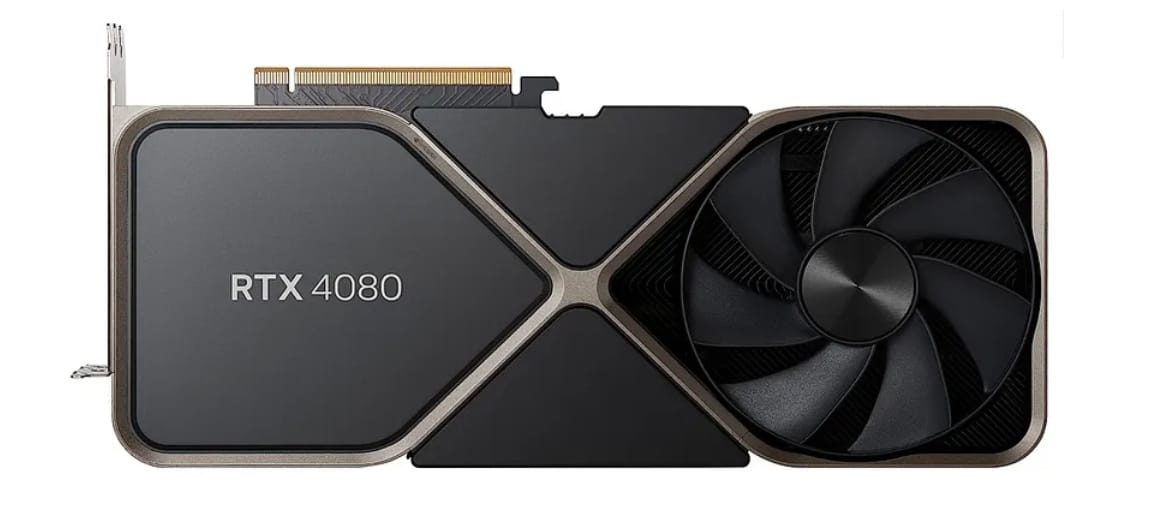
NVIDIA GeForce RTX 4080: Top-Tier Performance, Balanced Expense
Overview:
The RTX 4080 strikes a balance with 9,728 CUDA cores and 16GB GDDR6X VRAM, providing excellent performance without the extreme cost of the RTX 4090.
Pros:
- Powerful for various tasks,
- supports latest technologies
- has a large VRAM.
Cons:
- Still expensive
- demands a powerful CPU and PSU

NVIDIA GeForce RTX 3080 Ti: Best Value for Performance
Overview:
The RTX 3080 Ti comes with 10,240 CUDA cores and 12GB GDDR6X VRAM, offering high-end performance at a more accessible price point.
Pros:
- Rivals the RTX 3090 in performance
- budget-friendly
Cons:
- Significant investment
- VRAM may limit ultra-high-resolution tasks

NVIDIA GeForce RTX 3090: A Game Changer for Creatives
Overview:
With 10,496 CUDA cores and 24GB GDDR6X VRAM, the RTX 3090 excels in turning text descriptions into detailed images quickly.
Pros:
- Stellar performance for gaming
- AI applications, generous VRAM
Cons:
- Pricier than many gaming GPUs
- overkill for standard resolution gaming
To sum up:
NVIDIA's GeForce RTX 4090 is ideal for demanding tasks like stable diffusion models. AMD's Radeon RX 7900 XT excels in AI and image creation. For a balance of performance and value, consider NVIDIA’s GeForce RTX 3080. If budget is a concern, AMD’s Radeon RX 6800 offers solid performance at an affordable price.

Factors to Consider When Choosing a GPU
When choosing a GPU for stable diffusion, consider its VRAM, compatibility, power usage, and cooling needs. More VRAM aids in handling higher resolutions. Ensure compatibility with your setup and check power consumption and cooling requirements to prevent overheating.
- VRAM Requirements
It's super important to know how much VRAM you need for the right GPU because it helps manage all the heavy lifting required by stable diffusion models.
For simple tasks like making basic images, GPUs with at least 6GB of VRAM usually do the trick. But if you're tackling bigger projects that involve higher resolutions and intricate models, then going for GPUs with more room - think 8GB or even more - is a smart move. This way, your GPU won't get overwhelmed trying to keep up without hitting any snags or running out of space.
- Compatibility with Your Current System
Before you decide to buy one, take a close look at what the GPU asks for in terms of system requirements and see if your computer matches up. Look into things like whether you have enough PCIe slots free, if your power supply is strong enough, and if there are ports like HDMI or DisplayPort that you'll need.
3. Power Consumption
GPUs that are really powerful use up a lot of power, which might make your energy bill go up and put extra pressure on the power supply of your computer.
On top of that, when GPUs work hard, they get hot. To keep them running smoothly without getting too hot or slowing down, they need good cooling systems. Look for GPUs with strong cooling features like several fans or special tech to spread out the heat. This helps keep the temperature down so your GPU can do its job right.
- Cooling Needs
Choosing GPUs with effective cooling methods is key for keeping performance steady and making sure your GPU lasts longer without giving you trouble. Good cooling not only keeps things running at optimal performance but also makes using your computer more pleasant since it'll likely be quieter.
How to Optimize Your GPU Setup for Stable Diffusion
To get the best out of your GPU for stable diffusion, which is all about creating and processing images efficiently, there are a few important steps to follow.
STEP1: make sure your GPU's drivers are up to date
These updates often bring improvements that help with performance and fix issues that might mess with how well it works with stable diffusion models.
STEP2: adjust how you've set up your software for stable diffusion
Playing around with settings like how big each batch of work is, the learning rate, and the quality of images can really change both how fast things go and the quality of what you're making.
STEP3: think about using some extra tools or libraries designed specifically for deep learning tasks
TensorFlow or PyTorch could be great choices here because they offer more advanced features to boost your GPU's ability in handling these kinds of jobs.
Renting these best GPUs in Novita AI GPU Instance
After comparing them, you probably know which one to choose. You might be put off by the price of each GPU. Why not have a brand-new perspective to make use of excellent GPU resource without the high cost upfront?
Novita AI GPU Instance, a cloud-based solution, stands out as an exemplary service in this domain. This cloud equipped with high-performance GPUs like NVIDIA A100 SXM and RTX 4090. This is particularly beneficial for PyTorch users who require the additional computational power that GPUs provide without the need to invest in local hardware. By choosing Novita AI GPU Instance, developers can focus on their core development activities without the hassle of managing physical hardware. Join Novita AI Community to discuss!

Novita AI GPU Instance has key features like:
1. GPU Cloud Access:
Novita AI provides a GPU cloud that users can leverage while using the PyTorch Lightning Trainer. This cloud service offers cost-efficient, flexible GPU resources that can be accessed on-demand.
2. Cost-Efficiency:
Users can expect significant cost savings, with the potential to reduce cloud costs by up to 50%. This is particularly beneficial for startups and research institutions with budget constraints.

3. Instant Deployment:
Users can quickly deploy a Pod, which is a containerized environment tailored for AI workloads. This deployment process is streamlined, ensuring that developers can start training their models without any significant setup time.
4. Customizable Templates:
Novita AI GPU Pods come with customizable templates for popular frameworks like PyTorch, allowing users to choose the right configuration for their specific needs.
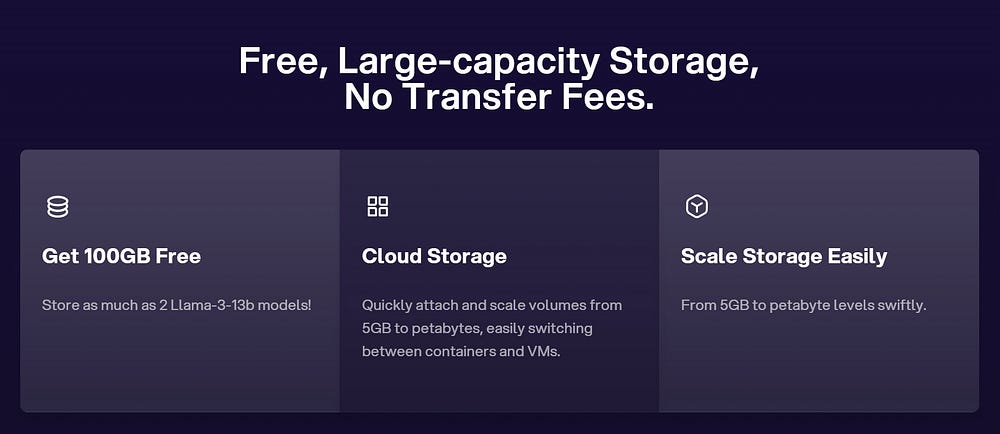
5. High-Performance Hardware:
The service provides access to high-performance GPUs such as the NVIDIA A100 SXM, RTX 4090, and A6000, each with substantial VRAM and RAM, ensuring that even the most demanding AI models can be trained efficiently.
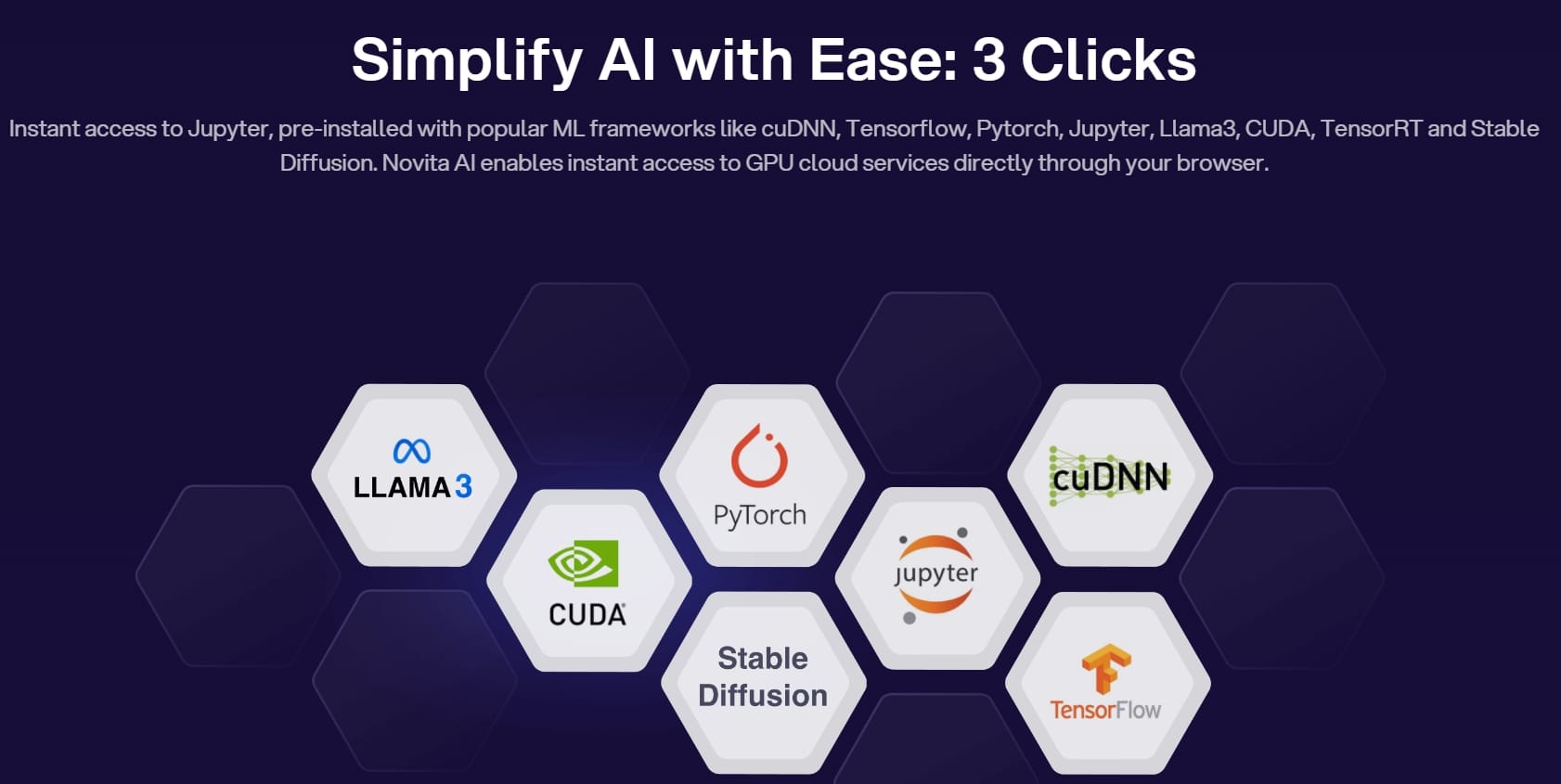
Rent NVIDIA GeForce RTX 4090 in Novita AI GPU Instance
When you are deciding which GPU to buy and considering both the function and price of it, you can choose to rent it in our Novita AI GPU Instance! Let's take renting NVIDIA GeForce RTX 4090 for example:
- Price:
When buying a GPU, the price may be higher. However, renting GPU in GPU Cloud can reduce your costs greatly for it charging based on demand.
Just like VIDIA GeForce RTX 4090, it cost 0.74 dollars per hour, which is charged according to the time you using, saving a lot when you don't need it.
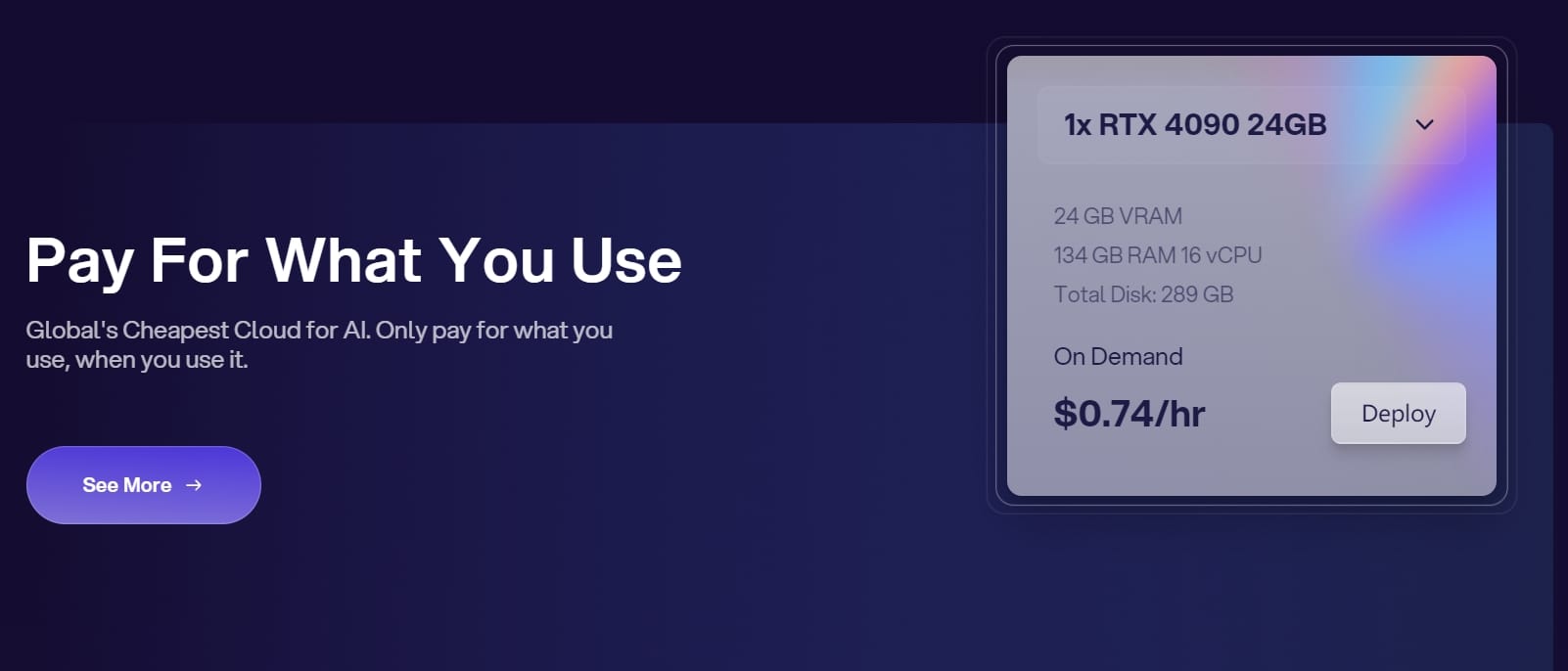
- Function
Don't worry about the function! Users can also enjoy the performance of a separate GPU in the Novita AI GPU Instance.
The same features:
- 24GB VRAM
- 134GB RAM 16vCPU
- Total Disk: 289GB
Conclusion
To wrap things up, picking the right GPU is key for good stable diffusion performance in 2024. When choosing, think about how much VRAM you'll need and if the GPU will work well with your system. By keeping your GPU setup updated with recommended drivers and making some efficiency improvements, you can really boost your stable diffusion capabilities. It’s important to keep an eye on how different GPUs perform and their cost-effectiveness to pick the best one for what you need. Making a well-informed choice will help improve your stable diffusion experience in 2024.
Frequently Asked Questions
Can Stable Diffusion Run on Integrated Graphics?
To run stable diffusion on your computer's graphics, you need a GPU. The standard graphics in your computer's chip may not be powerful enough for this task. Opt for a dedicated GPU for the best performance.
Is RTX 4060 better than 3060 for Stable Diffusion?
It's clear that the RTX 4060 has a bit of an edge thanks to its greater number of CUDA cores and better memory bandwidth.
What size GPU do I need for Stable Diffusion?
A computer must have at least 4GB of VRAM and GPU to work well.
Novita AI, the one-stop platform for limitless creativity that gives you access to 100+ APIs. From image generation and language processing to audio enhancement and video manipulation, cheap pay-as-you-go, it frees you from GPU maintenance hassles while building your own products. Try it for free.
Recommended Reading: